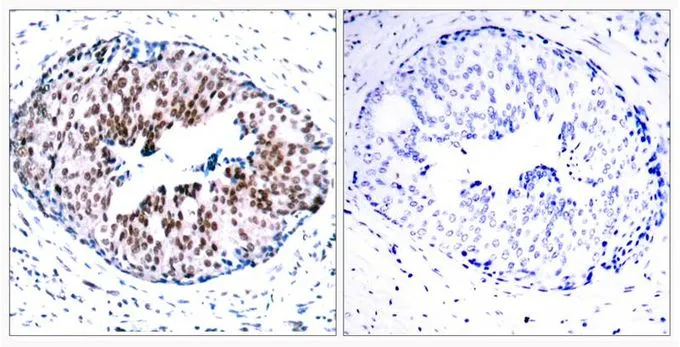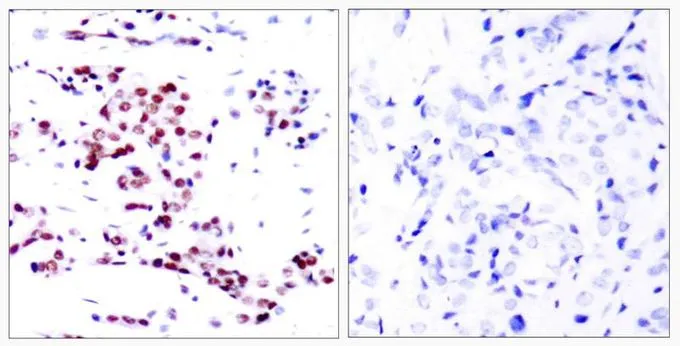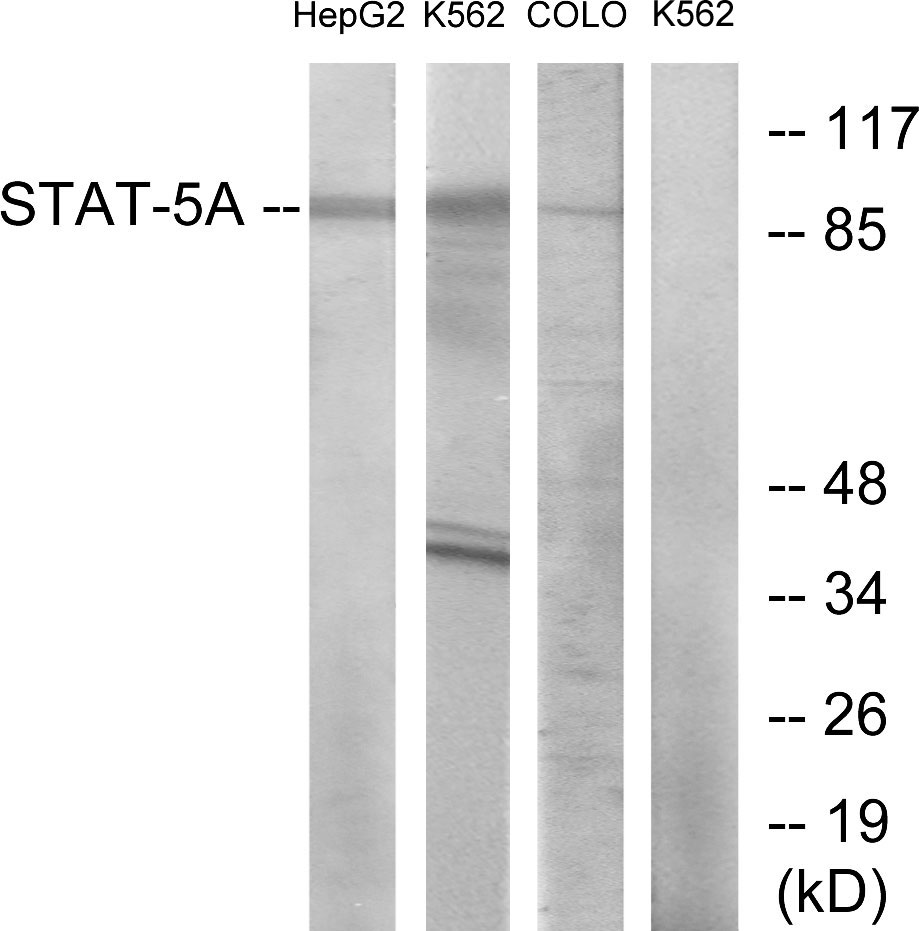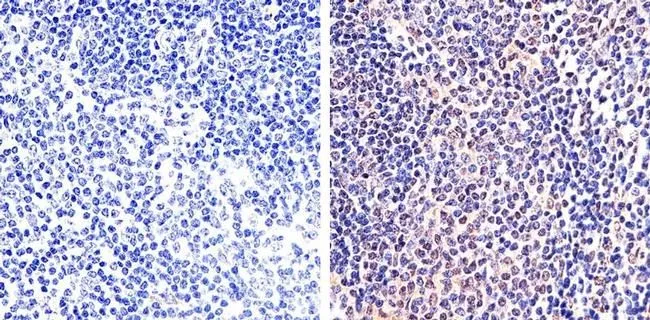
IHC-P analysis of mouse spleen tissue using GTX13593 STAT5A (phospho Tyr694) antibody. Right : Primary antibody Left : Negative control without primary antibody Antigen retrieval : 10mM sodium citrate (pH 6.0), microwaved for 8-15 min Dilution : 1:20
STAT5A (phospho Tyr694) antibody
GTX13593
ApplicationsFlow Cytometry, ImmunoFluorescence, ImmunoPrecipitation, Western Blot, ChIP Chromatin ImmunoPrecipitation, ImmunoCytoChemistry, ImmunoHistoChemistry, ImmunoHistoChemistry Paraffin
Product group Antibodies
TargetSTAT5A
Overview
- SupplierGeneTex
- Product NameSTAT5A (phospho Tyr694) antibody
- Delivery Days Customer9
- Application Supplier NoteICC/IF: 1:250. IHC-P: 1:10-1:100. FACS: 1:20. ChIP assay: 1-5 microg. *Optimal dilutions/concentrations should be determined by the researcher.Not tested in other applications.
- ApplicationsFlow Cytometry, ImmunoFluorescence, ImmunoPrecipitation, Western Blot, ChIP Chromatin ImmunoPrecipitation, ImmunoCytoChemistry, ImmunoHistoChemistry, ImmunoHistoChemistry Paraffin
- CertificationResearch Use Only
- ClonalityPolyclonal
- ConjugateUnconjugated
- Gene ID6776
- Target nameSTAT5A
- Target descriptionsignal transducer and activator of transcription 5A
- Target synonymsMGF, STAT5, signal transducer and activator of transcription 5A, epididymis secretory sperm binding protein
- HostRabbit
- IsotypeIgG
- Protein IDP42229
- Protein NameSignal transducer and activator of transcription 5A
- Scientific DescriptionThe protein encoded by this gene is a member of the STAT family of transcription factors. In response to cytokines and growth factors, STAT family members are phosphorylated by the receptor associated kinases, and then form homo- or heterodimers that translocate to the cell nucleus where they act as transcription activators. This protein is activated by, and mediates the responses of many cell ligands, such as IL2, IL3, IL7 GM-CSF, erythropoietin, thrombopoietin, and different growth hormones. Activation of this protein in myeloma and lymphoma associated with a TEL/JAK2 gene fusion is independent of cell stimulus and has been shown to be essential for tumorigenesis. The mouse counterpart of this gene is found to induce the expression of BCL2L1/BCL-X(L), which suggests the antiapoptotic function of this gene in cells. Alternatively spliced transcript variants have been found for this gene. [provided by RefSeq, Dec 2013]
- Storage Instruction-20°C or -80°C,2°C to 8°C
- UNSPSC12352203
References
- Chi M, Evans H, Gilchrist J, et al. Phosphorylation of calcium/calmodulin-stimulated protein kinase II at T286 enhances invasion and migration of human breast cancer cells. Sci Rep. 2016,6:33132. doi: 10.1038/srep33132Read this paper
- Lu JW, Wang AN, Liao HA, et al. Cabozantinib is selectively cytotoxic in acute myeloid leukemia cells with FLT3-internal tandem duplication (FLT3-ITD). Cancer Lett. 2016,376(2):218-25. doi: 10.1016/j.canlet.2016.04.004Read this paper
- Vazquez-Mellado MJ, Aguilar C, Rocha-Zavaleta L. Erythropoietin protects neuroblastoma cells against etoposide and vincristine by activating ERK and AKT pathways but has no effect in kidney cells. Life Sci. 2015,137:142-9. doi: 10.1016/j.lfs.2015.07.022Read this paper
- Uchino Y, Iriyama N, Hatta Y, et al. Granulocyte colony-stimulating factor potentiates all-trans retinoic acid-induced granulocytic differentiation in acute promyelocytic leukemia cell line HT93A. Cancer Cell Int. 2015,15:30. doi: 10.1186/s12935-015-0176-2Read this paper

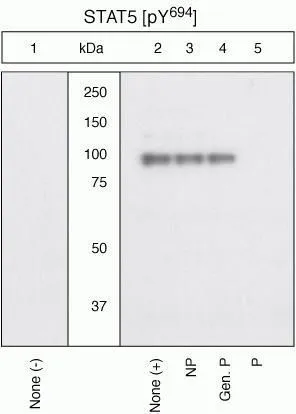
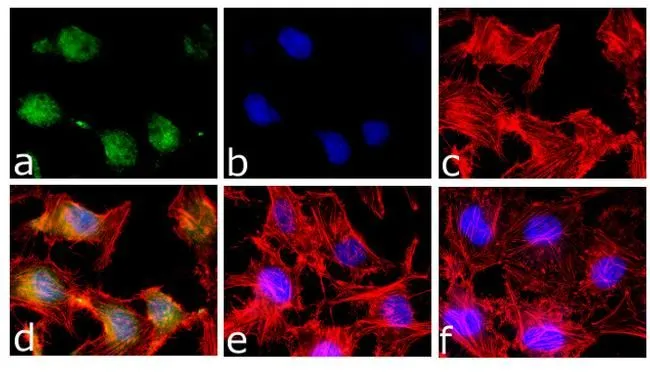
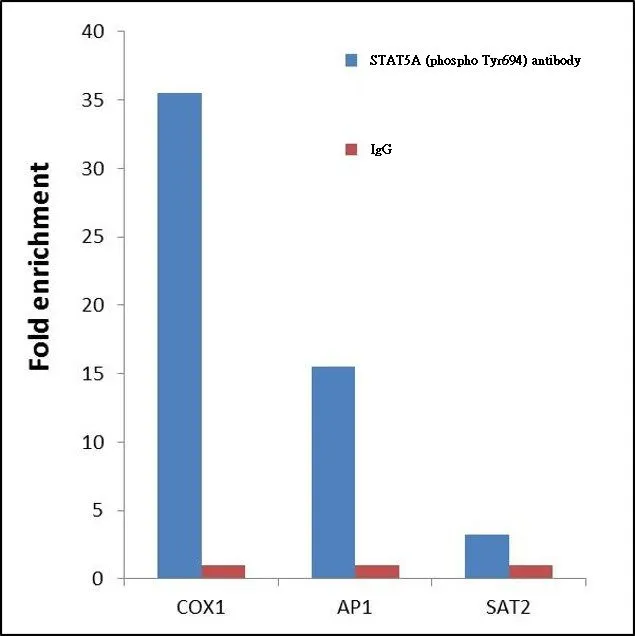

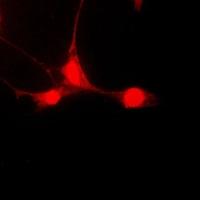
![ELISA analysis of antigen using GTX60652 STAT5A antibody [6D4]. Black : Control antigen 100ng Purple : Antigen 10ng Blue : Antigen 50ng Red : Antigen 100ng](https://www.genetex.com/upload/website/prouct_img/normal/GTX60652/GTX60652_20170912_ELISA_w_23061123_746.webp)
